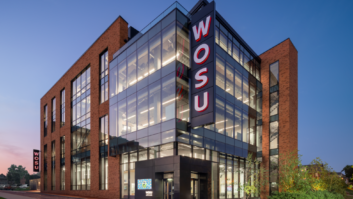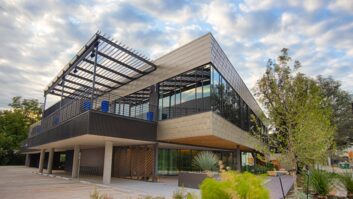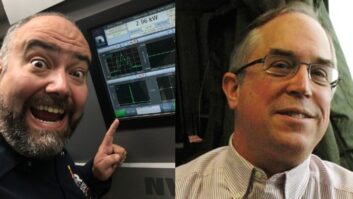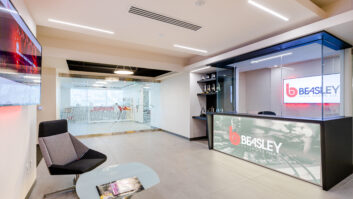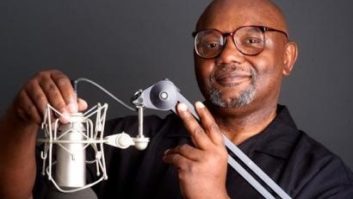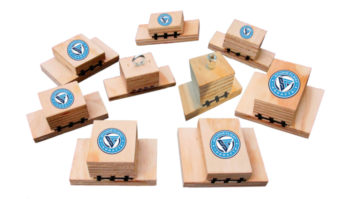Once upon a time, a live band at a radio station was common. Many radio stations even had their own house band to provide musical backgrounds, interludes or outright entertainment. And sometimes these stations had studios that were as good as the professional recording studios of the time. But that was long ago.

The Neon Trees perform at the CBS Radio Las Vegas performance space. As they sometimes say, what’s old is new again.
“Performance spaces” have recently become a big deal at some stations. In an effort to offer something new and become more relevant in the community or enhance their reputation as a source of music discovery, some radio stations have built-out small- to medium-sized stages for music acts to perform in. Some even offer recording equipment.
Dave Bialik and other AES 2016 organizers are hot on this trail. Tracy Teagarden of CBS Radio in Las Vegas will helm a session devoted to the topic: “Designing, Building and Maintaining a Radio Station Performance Space,” Oct. 1, 9–10:30 a.m.
Here are a few questions we put to Teagarden.
Radio World: What is this session about?
Tracy Teagarden: Radio has this fantastic access to artists, and after all these years, we are looking for better ways to interact with them and present them to our listeners. With fewer resources than you might imagine, a radio station can carve out a comfortable multipurpose venue. This session is about featuring what you have and creating memorable experiences for your listeners, how to prep your space, lighting, front of house, backline, hospitality, we’ll try and go from beginning to end.
RW: Will you have panelists? If so could you drop some names?
Teagarden: I will! Gary Kline of Kline Consulting, Andrew Stern of Cumulus Media San Francisco, Lynn Duke of CBS Radio in Los Angeles and Steve Shultis of New York Public Radio.
RW: Why should busy show attendees take time out of their schedule to attend your session?
Teagarden: Well … I’ve built a venue that is a training/conference room from 9 to 5, and I love to talk about it. We have a long history of understanding what the real job is, making artists comfortable, as well as two albums, hundreds of hours of on air, and web content. The panelists and I have eaten that elephant, and would like to help you with the first bite.
RW: Are dedicated performance spaces something just for well-heeled stations in big cities?
Teagarden: No, of course not. All manner of artists love to be in front of people, they have venues to fill, they will stop by your station if they think you can help them do that. Small towns have artists coming through too, and if the space and equipment are ready to go, people will be stopping by before you know it.
RW: Can they be good return on investments?
Teagarden: Certainly. Concert venues have seats to fill, music is a marketing tool used by virtually everyone. You have access to your listeners, who will remember for the rest of their lives sitting 10 feet from “that band” playing an “acoustic” set (I hate that word acoustic, it doesn’t mean anything), or maybe big stacks, and 4 x 10s and a million watts in your little room. What advertiser wouldn’t want to be a part of that?
RW: Can you name some examples of well-done performance spaces?
Teagarden: KROQ in Pasadena, Calif. — it’s my reference standard. CBS in Dallas, Alpha Broadcasting in Portland, and mine, CBS Las Vegas … I’m kind of partial to mine.
RW: Can these be in-house projects or are they best tackled by outside contractors?
Teagarden: We did ours in its entirety. If you can build a radio station, this will be a fun time. You’ll have to comply with your local codes, and you may not have the time and resources to do as much as you would like, but the more you do yourself, the better you will understand your project.







